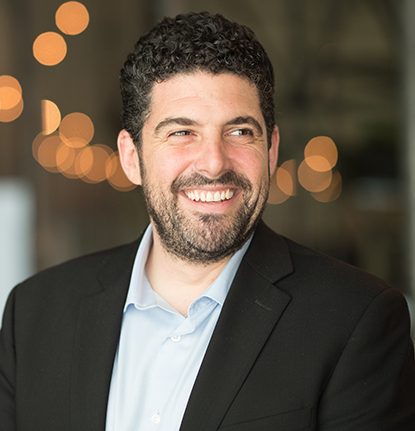Let’s first talk about utilizing analytics as a pathway to tell a larger story.
Jensen notes, “I have a global data and analytics role with Estee Lauder, and I’m part of a larger function that’s called enterprise marketing and data, and that spans insights, media, and the data infrastructure. Within this larger function, it’s great because we’re under the same leader. We tap into all the same tools. But even within my team, I’m wearing a lot of different hats. I’m in charge of analytics within social listening measurement in terms of marketing mix modeling and market share reporting. I can use the breadth of the capabilities that I have and bring it to bear in answering a business partner’s question. And ultimately, people that we’re working with, they want you to be their trusted business adviser. The future of analytics is having all of us who are analytics experts partnering with all of our other partners to ensure that we’re answering the right questions and doing it in a strong storytelling way.”
Others have talked about having one “tool kit” in past conversations.
Gould agrees, “Yes. I think it’s all about being able to leverage analytics. It’s just one tool kit, to really drive to that deeper meaning. I like the phrase of a pathway to tell a larger story because it’s really about connecting the dots across the cross-functional team. This is where with your sales and brand partners you can really understand where the insights and analytics drive towards action. And again, trying to train it to that larger story. Ultimately, we’re driving towards action.”
“I would say my role with General Motors, similar to Doug’s, is really just trying to figure out how do consumers think about the purchase journey?” says Drayton. “In the case of buying a vehicle, it’s your second biggest purchase aside from your home. It’s a highly thought out, very well demonstrated process, and the importance of understanding the consumer as they make their way through that. Approach is critical. It leads you into different gates, whether you’re on the media side, trying to understand whether your media is compelling, whether your creative is driving, or the right messaging, whether it’s changing your brand equity, into the site journey and whether that is truly converting consumers, whether you’re giving them the right information at the right time, and then handing that button on to the dealerships and their role in the sales process. But all the way through that, there is a customer. There’s a person who has fears and doubts and has barriers that we need to break through or help to explain how something works. Consumer centricity is just so critical in such a high value process for us.”
Where would you start as far as orchestrating your story from data to insights?
Drayton adds, “Even though we come from different industries, I think we would probably all say that it’s about understanding what the marketing team is there to do, what their goal is because they may not know the end outcome or the right way to get there. But with insights, you can help guide them. I often say if insights are strong enough, they can drive strategy, not the other way around. It’s always about starting with, what’s your objective? Because that’s going to determine how you get measured and what performance and approach you take. That really forms the foundation of how we brief our agencies, how we understand our scorecarding and how we drive performance. We are starting to extract the insights that really matter for them, versus the multitude of data that’s flying around out there, focusing on a logical, meaningful story.”
Jensen points out, “The days of the hundred-page insight deck are over. We’ve instituted a new philosophy of writing a one-page executive summary that has the business objective, the context, the summary of the insights, and then recommended actions, but even further, what are the decisions you’re requesting the brand team to make from that? And then if that’s supported by ten pages of insights or new stories, then that’s the way it must start. But we pivoted to this about two to three years ago, and it’s been instrumental because what was happening to a lot of marketing leaders is they would get decks the night before their meetings. And show up to the meetings and say, I don’t even know what to think about your hundred-page stack. That’s the whole impetus for changing that. The analytics professional today, getting the insight is only the start of that. It’s how you learn how to do storytelling in a smart and succinct way. That’s the future.”
It’s about understanding what matters.
“Exactly,” agrees Gould. “I really like what both Doug and Miles said about the simplicity of having that one pager. The idea is that we’re leveraging that. If someone wants to really dig into the details, it’s available for them for those of us who are very analytic focused. But if I’m leading a meeting where we’re going over thirty-page decks, then that is not successful. Now we’re using that again to have all the details, and then we’re walking through one or two slides and then flipping it appropriately where it needs to go. What is the story, what are the implications, what are the discussion topics that we need to have? Let’s then use our time talking through those topics and what actions we need to take.”
Check out the full video from TMRE Continued, as the session looks at taking action, building out the analytics ecosystem, the skill of the storyteller and more.
Contributors
-

Seth Adler heads up All Things Insights & All Things Innovation. He has spent his career bringing people together around content. He has a dynamic background producing events, podcasts, video, and the written word.
View all posts -

Matthew Kramer is the Digital Editor for All Things Insights & All Things Innovation. He has over 20 years of experience working in publishing and media companies, on a variety of business-to-business publications, websites and trade shows.
View all posts

























































































































































